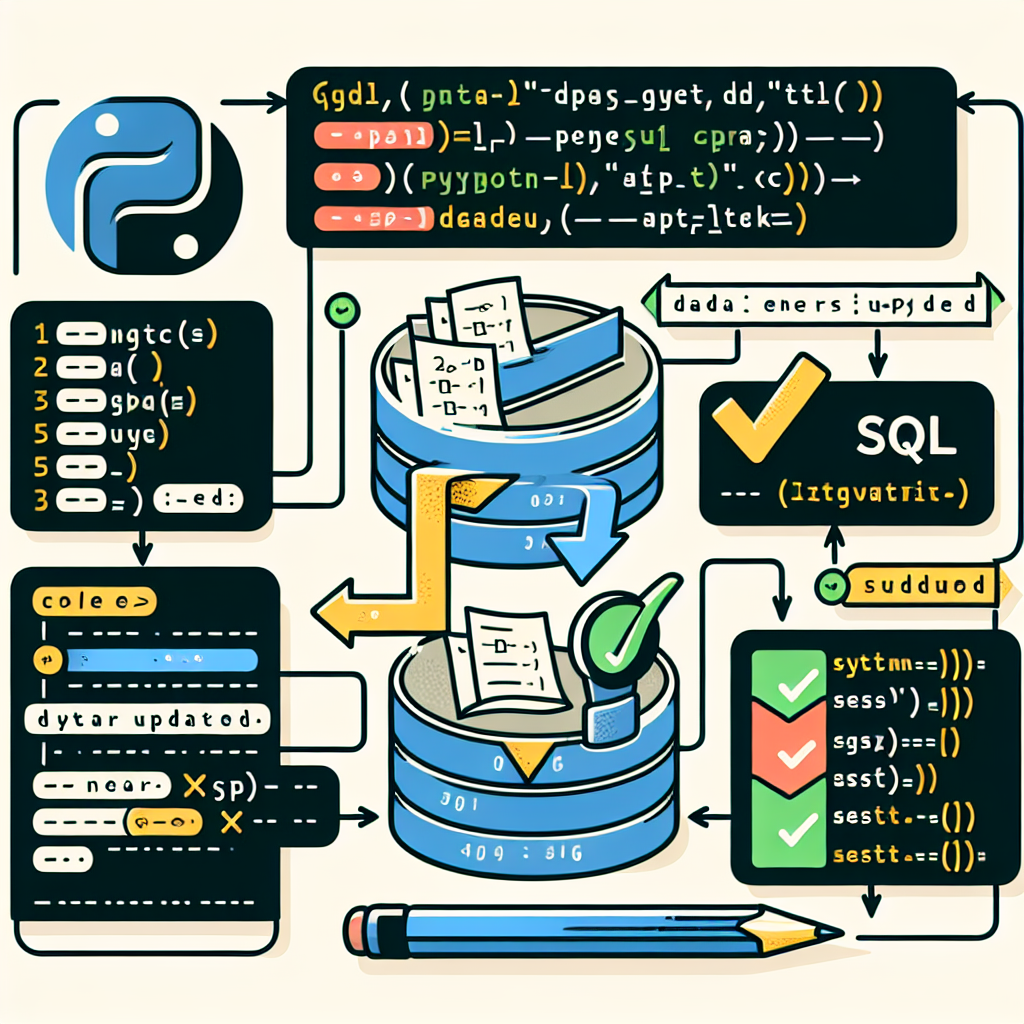How to Update Data in SQL Using Python

Welcome to an in-depth exploration of how to update data in SQL databases using Python. In this article, we will delve into the practical steps and best practices for performing data updates, ensuring that your database interactions are efficient, secure, and scalable. Whether you’re a seasoned developer or just starting out, this guide will provide you with the knowledge and tools to confidently manipulate SQL data using Python.
Understanding the Basics of SQL and Python Integration
Before we dive into the specifics of updating data, it’s essential to understand how Python can interact with SQL databases. Python, with its simplicity and robust ecosystem, is a popular choice for database operations. SQL (Structured Query Language) is the standard language for managing and manipulating relational databases. Together, they form a powerful duo for database management.
Setting Up the Environment
To begin, you’ll need a Python environment with the necessary libraries installed. The most common library for SQL operations in Python is PyMySQL for MySQL databases, psycopg2 for PostgreSQL, and pyodbc or SQLAlchemy for other databases. Install the appropriate library using pip:
pip install PyMySQL
pip install psycopg2
pip install pyodbc
pip install SQLAlchemy
Establishing a Database Connection
Once the environment is set up, the next step is to establish a connection to your SQL database. This involves specifying your database credentials and connection details. Here’s an example using PyMySQL:
import pymysql
connection = pymysql.connect(host='hostname',
user='username',
password='password',
database='databasename',
cursorclass=pymysql.cursors.DictCursor)
Preparing to Update Data in SQL
With the connection in place, you’re ready to perform data updates. However, it’s crucial to understand the SQL UPDATE statement and how it works. The basic syntax is as follows:
UPDATE table_name
SET column1 = value1, column2 = value2, ...
WHERE condition;
This statement updates the specified columns of all rows that meet the condition. If the WHERE clause is omitted, all rows in the table will be updated, which can be dangerous if not intended.
Executing the Update Command
To execute an update command in Python, you’ll use a cursor object obtained from the connection. Here’s a step-by-step guide:
Creating a Cursor Object
First, create a cursor object using the connection:
with connection.cursor() as cursor:
# Your SQL operations go here
Writing the Update Statement
Next, write your SQL update statement within the cursor context:
sql = "UPDATE employees SET salary = %s WHERE id = %s"
new_salary = 70000
employee_id = 3
cursor.execute(sql, (new_salary, employee_id))
Committing the Changes
After executing the update statement, commit the changes to the database:
connection.commit()
Closing the Connection
Finally, close the cursor and connection when you’re done:
cursor.close()
connection.close()
Best Practices for Updating Data
When updating data in SQL using Python, there are several best practices to follow:
- Use Parameterized Queries: To prevent SQL injection attacks, always use parameterized queries instead of string concatenation.
- Handle Exceptions: Use try-except blocks to handle potential database errors gracefully.
- Test with Transactions: Use transactions to test updates before committing them, ensuring data integrity.
- Close Resources: Always close cursor and connection objects to free up resources.
Advanced Techniques
For more complex update scenarios, consider the following advanced techniques:
Batch Updates
To update multiple rows efficiently, use executemany() instead of executing individual update statements:
data = [(70000, 3), (80000, 4), (90000, 5)]
cursor.executemany(sql, data)
Dynamic Updates
If you need to build dynamic update statements based on varying conditions, use string formatting carefully to construct the SQL statement:
set_clause = ', '.join([f"{k} = %s" for k in update_values.keys()])
where_clause = ' AND '.join([f"{k} = %s" for k in conditions.keys()])
sql = f"UPDATE employees SET {set_clause} WHERE {where_clause}"
FAQ Section
How do I ensure my Python script is secure when updating SQL data?
Always use parameterized queries to avoid SQL injection, handle exceptions properly, and never expose your database credentials in your code.
Can I use Python to update data in any SQL database?
Yes, Python can interact with virtually any SQL database, as long as you have the appropriate driver or library installed for that database system.
What should I do if I accidentally update the wrong data?
If you’ve accidentally updated the wrong data and haven’t committed the transaction yet, you can roll back the changes. If the changes are already committed, you’ll need to perform another update to correct the data, or restore from a backup if available.
Conclusion
Updating data in SQL using Python is a powerful capability that, when done correctly, can greatly enhance your data management tasks. By following the steps and best practices outlined in this article, you’ll be well-equipped to perform updates with confidence and precision. Remember to always prioritize security, efficiency, and data integrity in your database operations.

